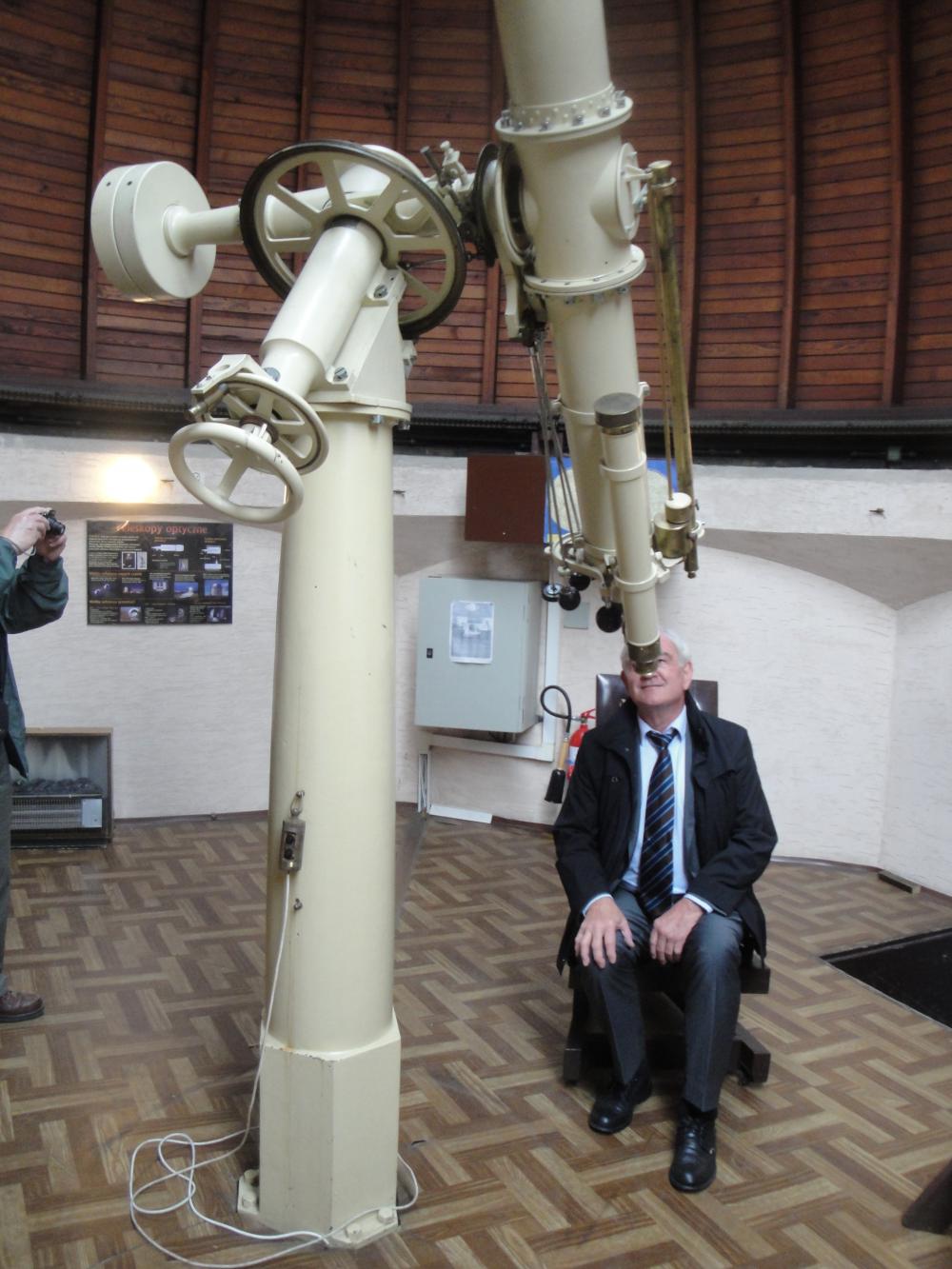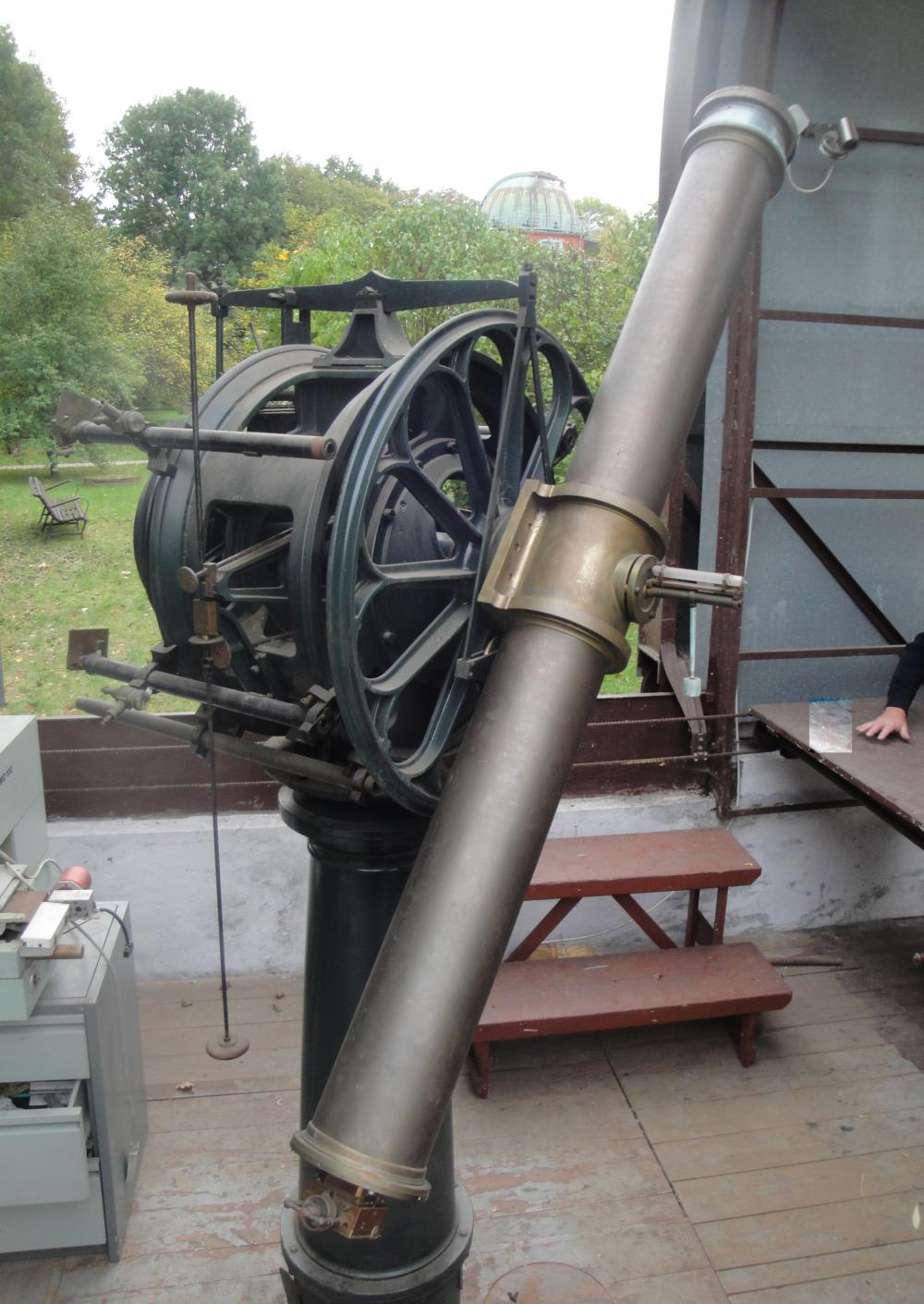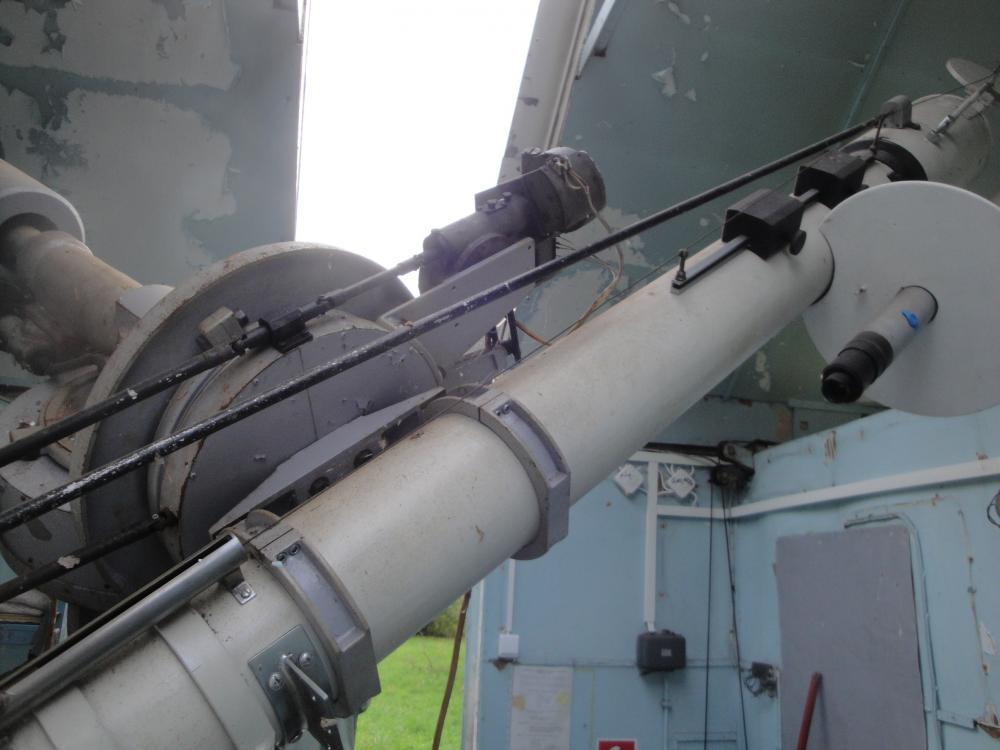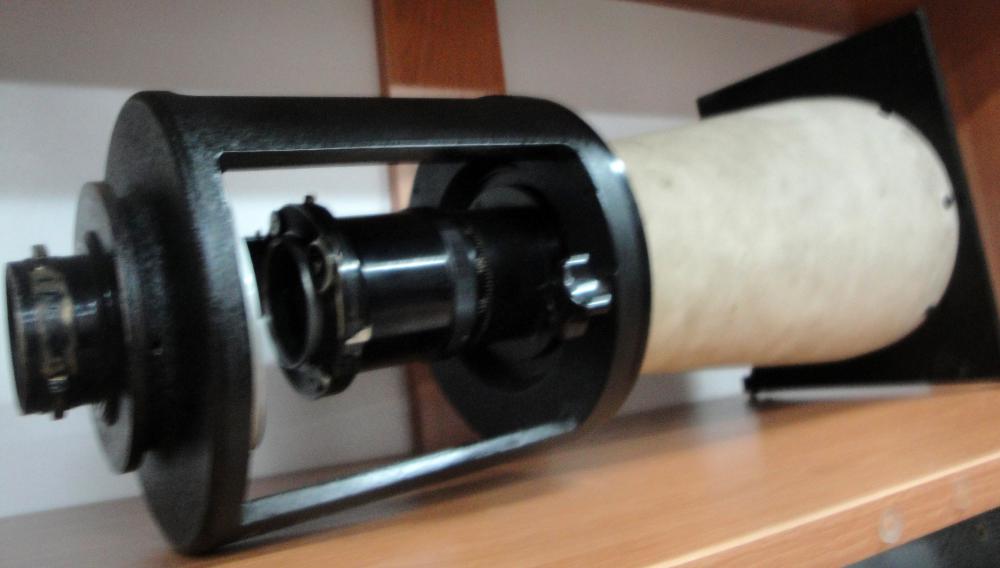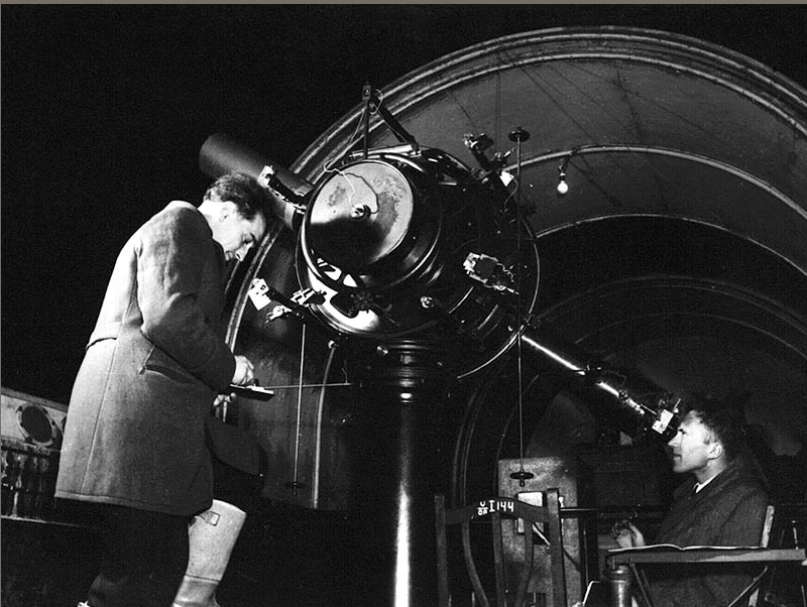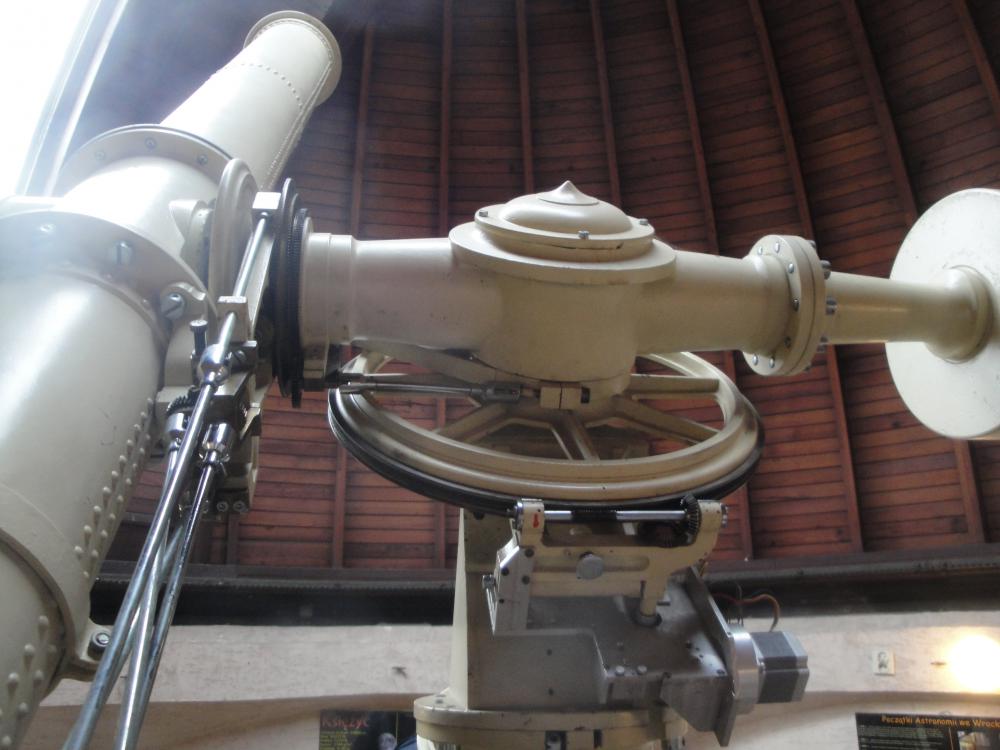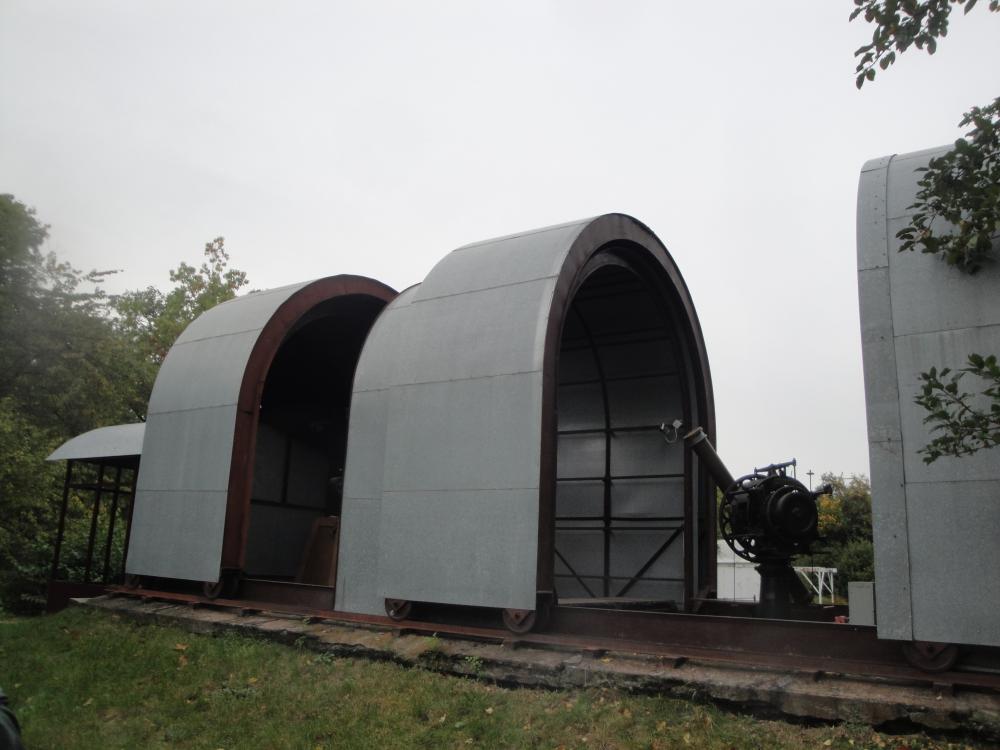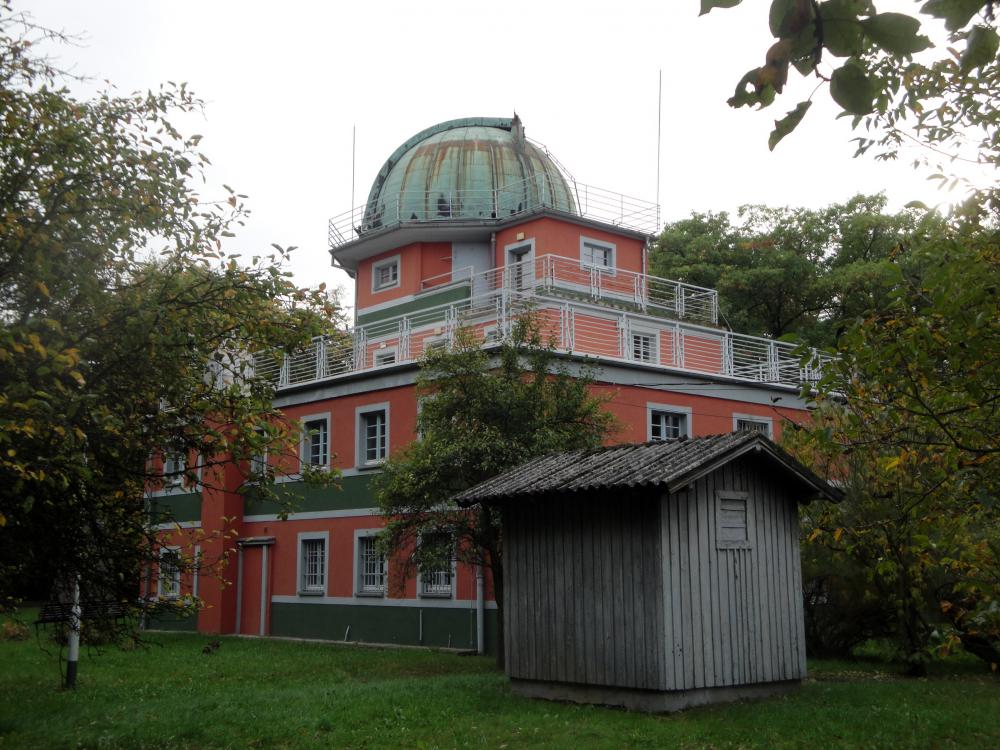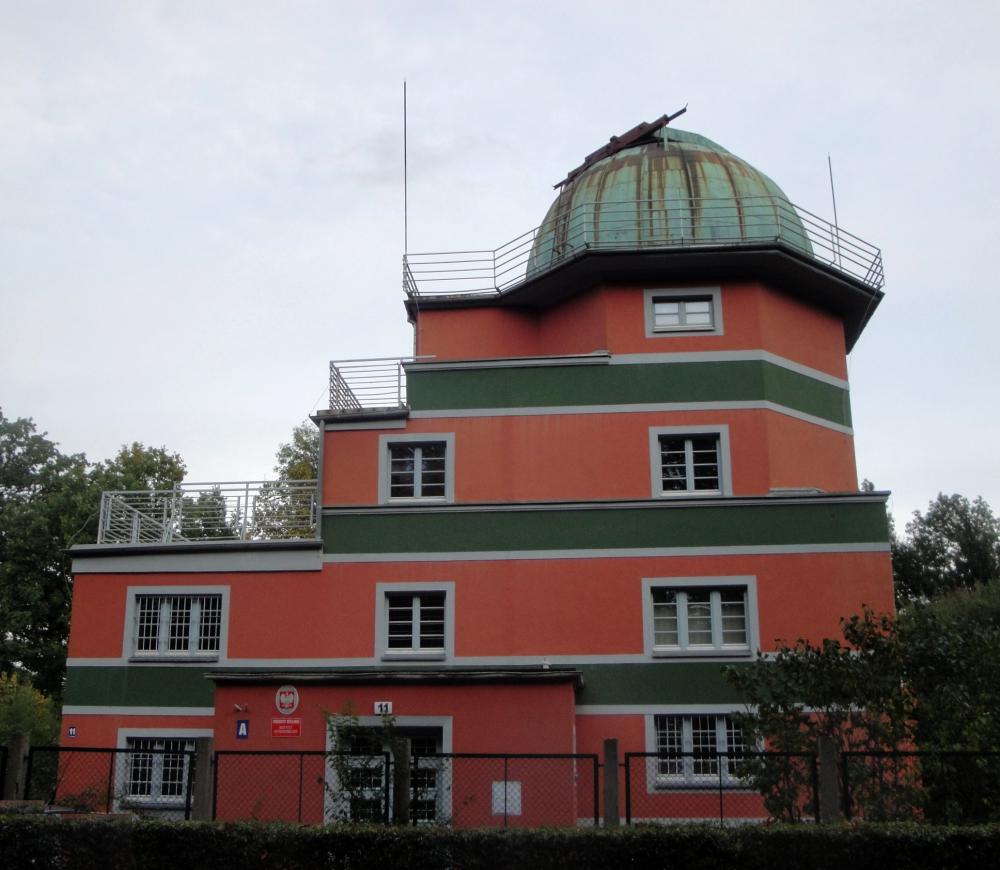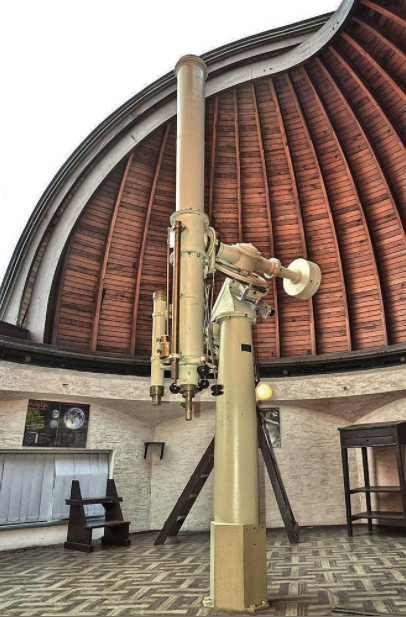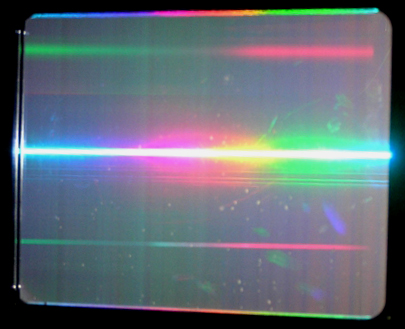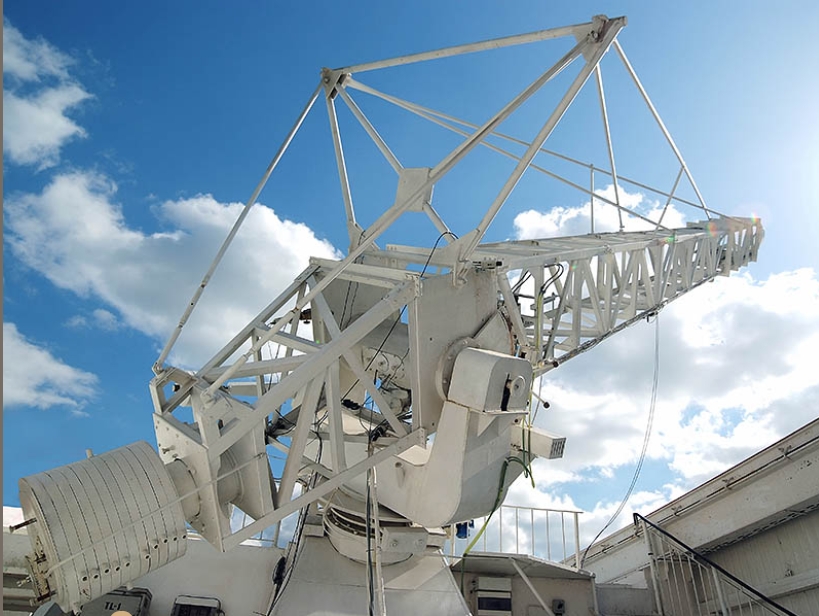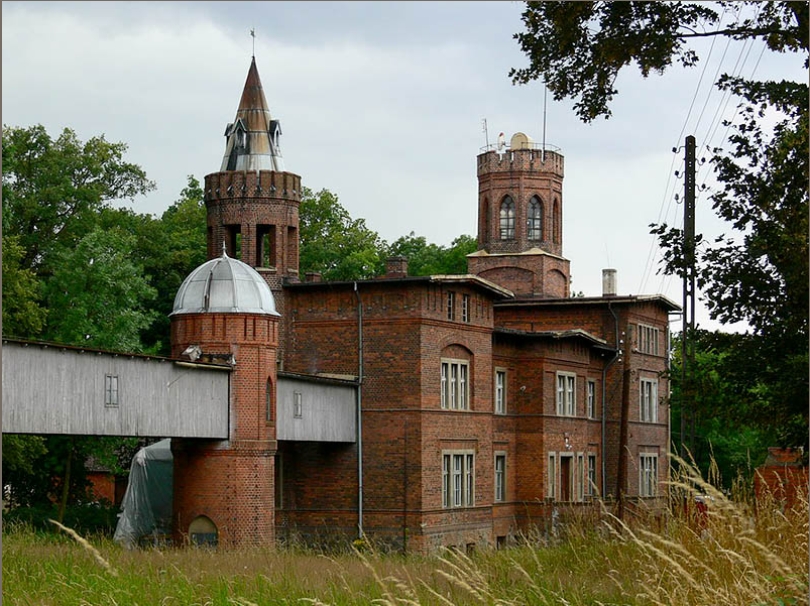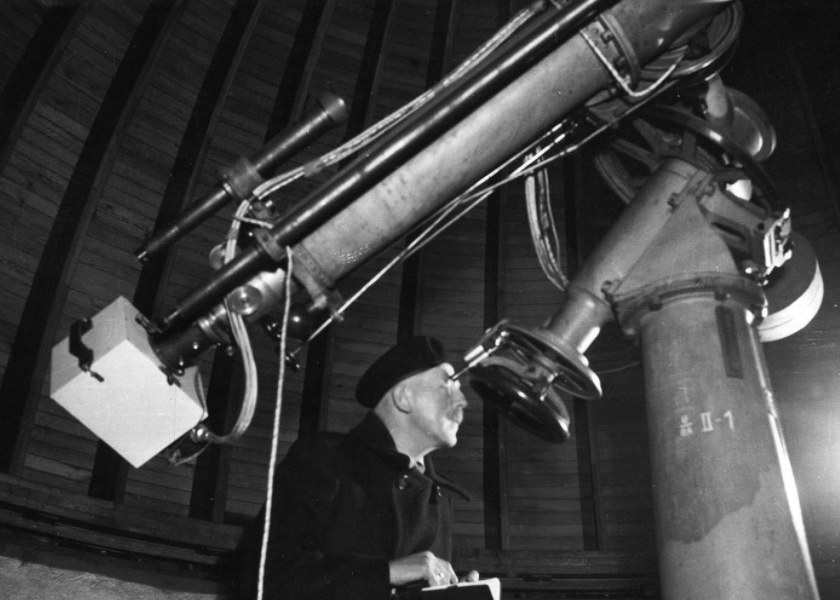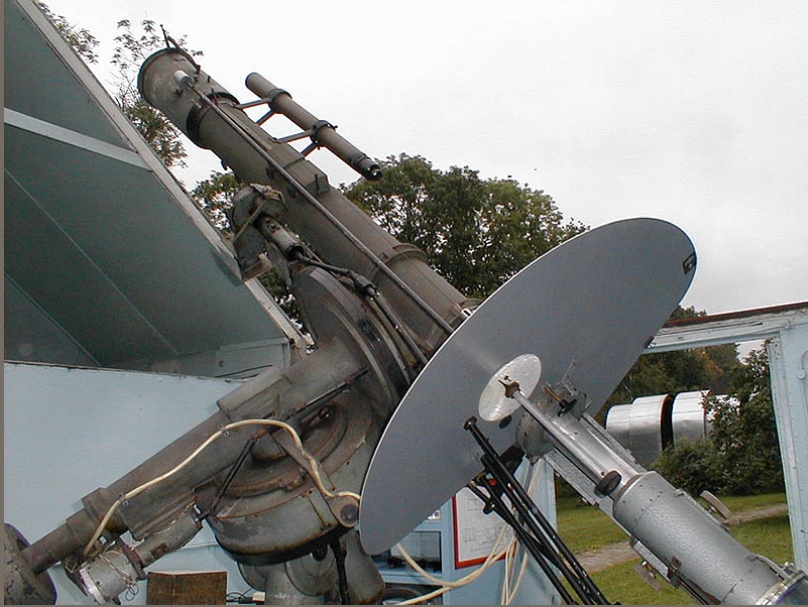
Category of Astronomical Heritage: tangible immovable
Breslau Observatory, Wrocław, Poland

Description
Geographical position
Wrocław Observatory, Kopernika 7, 51-622 Wrocław, Poland
See also: Mathematical Tower Breslau (Wrocław’s first Astronomical Observatory), 1791
Location
Latitude 51°6’42’’ N, Longitude 1h08m21s, Elevation ...m above mean sea level.
IAU observatory code
547
Description of (scientific/cultural/natural) heritage
Prehistory -- Jesuit Observatory Mathematical Tower in the center of Breslau (1791)
The Mathematical Tower Breslau (Wrocław’s first Astronomical Observatory) was founded in 1791 by Longinus Anton Jungnitz (1764--1831). It was located in the so-called Mathematical Tower Breslau at the University’s Main Building. In the following years, the Observatory was managed by: Ernst Julius Scholtz (1799--1841), Palm [Palon] Heinrich Ludwig von Bogusławski (1789--1851), the discoverer of the comet from 1835, and then Johann Gottfried Galle (1812--1910), the discoverer of Neptune (1846). With small instruments at its disposal, the Observatory specialized in those years in geodetic astronomy, meteorology, observations of comets and meteors, photometry of planets and asteroids, and the preparation of sky maps.
Astronomical Institute in Copernicus street (1927)
At the turn of the 20th century, Johann Gottfried Galle’s (1812--1910) successor, Julius Heinrich Georg Franz (1847--1913), moved the Observatory to an island on the Oder River near the University by installing two new instruments there, including the 8-inch-Clark-Repsold refractor (1881), now located in the Institute’s dome.
The Astronomical Institute in Copernicus street is located in the Szczytnicki Park (Scheitinger Park), in the Eastern part of Wrocław. Part of the studio, lecture hall, institute library and offices of employees are located in three buildings on the side of ul. Copernicus.
The next two directors of the Observatory, Alexander Wilkens (1881--1968) and Erich Schönberg (1882--1965), built in the 1920s and 1930s in the new area in Szczytnicki Park near the Centennial Hall (now ul. Kopernika 11), first a meridian pavilion, and then the present building of the Institute with a dome housing a refractor. Erich Schönberg remained the director of the Observatory until 1945.
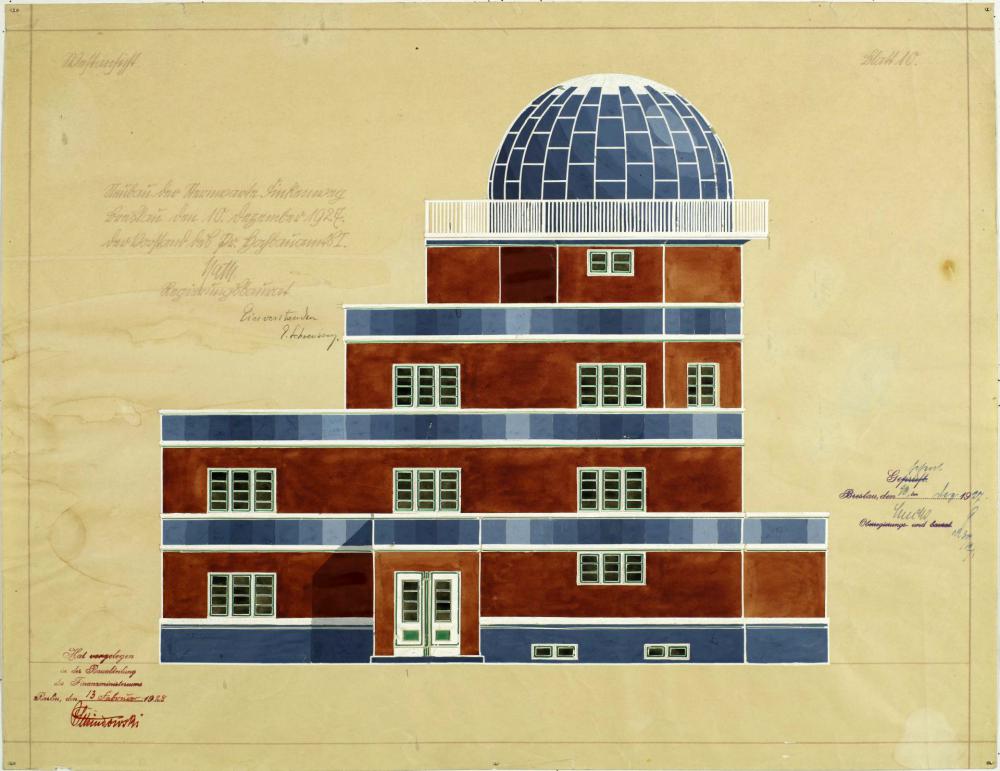
Fig. 1. Fritz Nathan (1891--1960, a color design of the Astronomical Observatory of the University of Wrocław, 11 Kopernika Street, west facade view, 10th December 1927 (http://ma.wroc.pl/en/about-museum/collection/department-of-wroclaw-architecture-of-the-nineteenth-and-twentieth-century/)
Fritz Nathan (1891--1960) was one of the aspiring architects in Germany in the 1920s. With the New Jewish Cemetery in Frankfurt am Main, its department stores and industrial buildings, he created significant examples of Bauhaus. But then the National Socialist dictatorship brought the Jewish architect’s career to an abrupt end. In 1940 he emigrated to the USA and settled in New York.
The eye-catching red, three-story building of Breslau Observatory in Bauhaus style is crowned with a dome housing a 20-cm-Clark-Repsold refractor.

Fig. 2a. Breslau Observatory, main building, with the 20-cm-Clark-Repsold refractor (1881) in the dome (Photo: Gudrun Wolfschmidt)
Fig. 2b. Breslau Observatory, main building, with the 20-cm-Clark-Repsold refractor (1881) in the dome (Photo: Gudrun Wolfschmidt)
Looking from the terrace of the main building, you will see in the foreground two smaller buildings housing the offices of the Institute’s employees. In the background you can see a small coronograph pavilion and an oblong dome housing two of the oldest instruments of the Institute: a transit instrument and a vertical circle, Repsold of Hamburg (1900), optics: Steinheil of Munich (diameter of both lenses: 16cm).
Białkow (Belkawe) Astrophysical Observatory (1880s, 1928)
Since 1928 Wrocław astronomers have been visiting the private observatory of the Wuzikowski (Wutschichowsky, Wuczychowski) family, located in the village of Białków near Winsk (about 70 km from Wrocław). During World War II, a villa was built in this area, which, together with the nearby palace, is used by astronomers to this day.
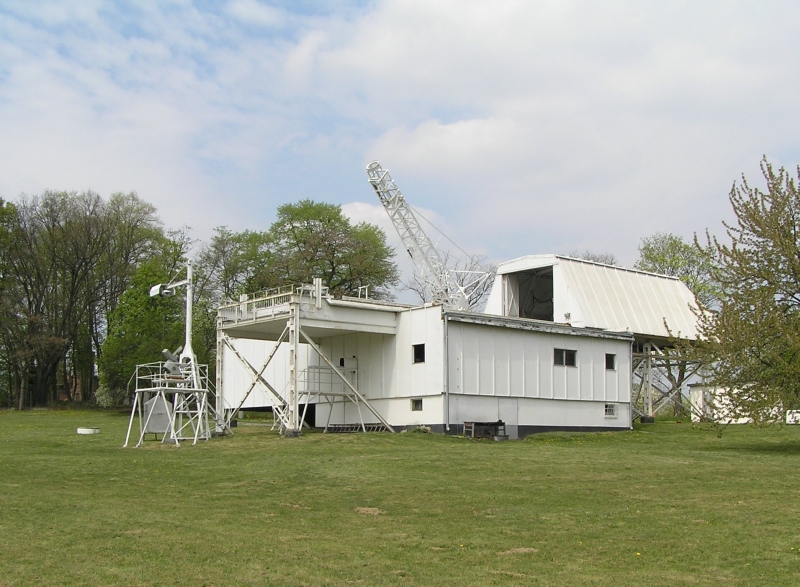
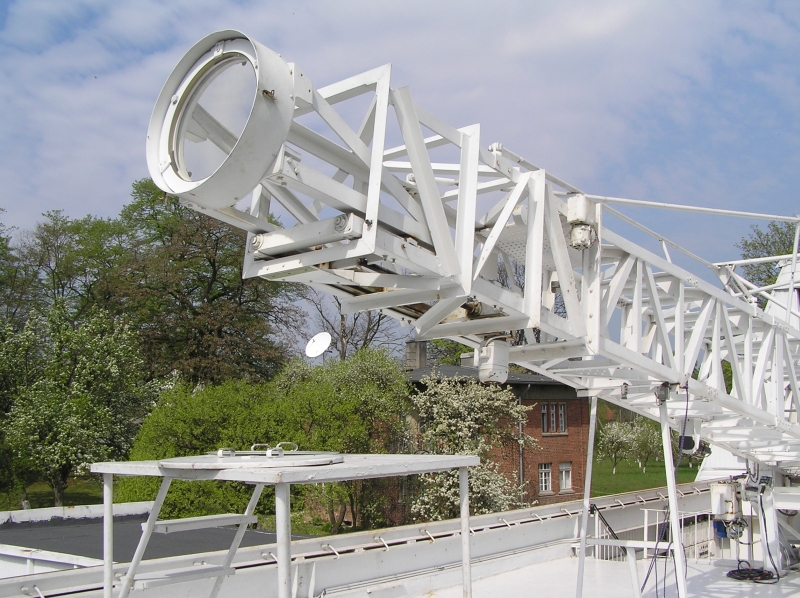
Fig. 3a,b. Białkow Astrophysical Observatory, Coronagraph (Wrocław Astrophysical Observatory)

Fig. 3c. Białkow Astrophysical Observatory, MSDP-spectrograph of the Coronograph (Wrocław University Museum)
In the area are: a new workshop building with an adjacent educational pavilion, a small coronograph pavilion, and a transitional instrument pavilion and a vertical circle. On the premises of the Institute, closer to Mickiewicza Street, there is also a pavilion of the Wrocław branch of the Space Research Center of the Polish Academy of Sciences, i.e. the Department of Solar Physics.
History
Astronomical Institute in Copernicus street -- Instruments
Fig. 4a,b. 16-cm-Transit instrument and 16-cm-Vertical circle, Repsold of Hamburg (1900), Steinheil of Munich (Photo: Gudrun Wolfschmidt)
- Transit instrument and Vertical circle, Repsold of Hamburg (1900), optics: Steinheil of Munich (both objectives 16cm)
- 20-cm-Clark-Repsold-Refractor, made by Alvan Clark & Sons, Cambridge, Massachusetts, Repsold of Hamburg (1881).
The Clark-Repsold-Refractor was bought for the University of Wrocław in 1897, and installed in a temporary observatory on ┼Üluz Island, then, since 1917, in Szczytnicki Park, where the new observatory was built.
Currently, this instrument is on display at the museum in Frombork (a similar Clark-Repsold Refractor is installed at the Astronomical Institute in Wrocław).
- A 60-cm astrophysical reflector, produced by Carl Zeiss of Jena (1976), was placed under the dome in place of the aforementioned 20-cm refractor.
- Registering Microphotometer
- Small coronagraph, constructed by Bogdan Rompolt (1965), installed in a pavilion
- Large coronagraph with a lens diameter of 53-cm, manufactured in the USSR (1978), in a new pavilion, now in Białków.
The MSDP spectrograph provides simultaneous two-dimensional spectral observations of extended areas on the Sun.
Fig. 5a,b. Breslau Observatory, Coronagraph (Photo: Gudrun Wolfschmidt)
The observatory in Białków was established in the 1880s as a private astronomical observatory of the seasoned amateur astronomer Leo Johann Erdman [von] Wuzikowski (Wuczychowski). To this day, the pride of Bialków is the house of the Wuzikowski family (called by astronomers the palace, a red-brick neo-Gothic palace, with palm trees in the conservatory), whose silhouette topped with two towers dominates the surrounding village. Observers working at the Observatory in Bialków live in a historic villa, built before World War I as a tenant’s house.
Białków Astrophysical Observatory is a part of the Institute, operates as one of the five professional national astronomical observatories in Poland.
There are actually two professional instruments in the Białków observatory: a 60-cm reflector and the 53-cm coronagraph. It actively participates in international programs and campaigns to observe both the Sun and the stars.
A characteristic feature of the coronagraph pavilion is a large, sliding roof, weighing 17 tons and a length of about 15m, revealing the entire instrument within 4 minutes, which minimizes the impact of the "pavilion effect" on the image quality. In the pavilion there are observation rooms, a spectrograph room, a darkroom and a workshop. In front of the pavilion, a Jensch’s coelostat with 30cm mirrors was placed, supplying an auxiliary horizontal telescope.

Fig. 6. Antoni Opolski measuring with the Registering Microphotometer in Wrocław Observatory, 1960s (University Museum Wrocław)
After the war, the Observatory was managed by astronomers from Lwiw Observatory. The first director of the Observatory (1945 to 1958) was Prof. Eugeniusz Stanisław Rybka (1898--1988). Using the surviving meridian instruments, he organized astrometric and photometric observations, both in Wrocław and Białków.
In 1956, the Observatory was renamed the Astronomical Institute, and its new director (1958 to 1971) was Prof. Jan Jerzy Mergentaler (1901--1995). He was a precursor of heliophysical research, which over the years has become one of the two main fields in Wrocław.
At the same time, astrophysical observations were carried out, focusing on the photometry of variable stars. The initiator of this research was Prof. Antoni Opolski (1913--2014), director of the Institute in 1971 to 1978. In the 1970s the idea of building the Observatory on Wiełka Sowa emerged, which was abandoned due to lack of funds. Two instruments purchased for the planned Observatory, the 60-cm Zeiss reflector (1976) and the 53-cm-Coronagraph (1978), were located in Białków and are currently the most important observation instruments of the Institute.
State of preservation
The Astronomical Observatory in Szczytnicki Park is well preserved in Bauhaus style; in 2012, it was restored in original, modernistic colours.
Comparison with related/similar sites
Observatories in Bauhaus style are extremely rare;
appart from Wrocław Observatory, Poland (1927) should be mentioned:
Istanbul University Observatory (1935/36) and Belgrade Observatory, Serbia (1928--1932).
Threats or potential threats
no threats
Present use
There are two departments in the Institute:
Department of Astrophysics and Classical Astronomy
Department of Solar Physics and Space Science.
Astronomical relevance today
The Wrocław Observatory is still in use as Astronomical Institute of Wrocław University.
New university observatory -- Wiełka Sowa Mountain
In the 1960s and 1970s, Wrocław astronomers tried to build a new university observatory, which was to be located on the top of Wiełka Sowa Mountain (1015m above sea level) in the Owl Mountains range, about 70 km from Wrocław. Many years of systematic research have shown that this place has a good astroclimate. Unfortunately, due to the total collapse of the People’s Republic of Poland, the construction of the observatory did not take place, but the previously ordered instruments have arrived. New instruments were set up "temporarily" at the Observation Station in Białków. Unfortunately, the low altitude of the terrain (140m above sea level) and not the best astroclimate reduce the possibility of their effective use.
After 1978, the function of the director of the Astronomical Institute was performed by: Prof. Jerzy Jakimiec (1978 to 1981, 1987 to 1993), prof. Mikolaj Jerzykiewicz (1981 to 1984), doc. Tadeusz Jarzebowski (1984 to 1987) and Prof. Henryk Cugier (1993 to 2002), Prof. dr. hab. Michal Tomczak (2002 to 2020). Currently, the director of the Institute is dr hab. Robert Falewicz.
References
Bibliography (books and published articles)
- Kubiak, Marcin & Iwona Korzeniewska: Astronomical observatories in Poland. In: Astronomical observatories in Poland. Edited by the Local Organizing Committee for the Extraordinary General Assembly of the IAU in Poland. Warszawa (Poland): Polish Astronomical Society. PWN - Polish Scientific Publishers 1973 (62 p.), (1973aop..book.....K).
- Müller, Peter: Breslau 1728--1733. In: Sternwarten in Bildern. Berlin, Heidelberg: Springer 1992 (doi).
- Wolfschmidt, Gudrun: Kirchhoff and Bunsen, influential professors of Breslau (Wrocław) University, and their contribution in the development of spectral analysis. In: Ksiega Pamiatkowa Jubileuszu 200-lecia utworzenia Panstwowego Uniwersytetu we Wrocławiu. Materialy Miedzynarodowej Konferencji Naukowej, Wrocław 4-7 pazdziernika 2011 r. Tom IV, Uniwersytet Wrocławski w kulturze europejskiej XIX i XX wieku. (Proceedings of the International Scientific Conference in Wrocław University, Poland. In the European Culture of the 19th and 20th c. In Honour the 200th Anniversary of the Foundation of State Wrocław University, Wrocław, 4-7 October 2011). Ed. by Jan Harasimowicz. Wrocław: Wydawnictwo Uniwersytet Wrocławskiego 2015, p. 663-670.
Links to external sites
- Astronomical Institute University of Wrocław
- Multimedialna BAZA DANYCH, Muzeum Universytetu Wrocławskiego, Astronomia we Wrocławiu (Polish)
- Muzeum Architektury we Wrocławiu, Department of Wrocław Architecture of the nineteenth and twentieth century
Links to external on-line pictures
no information available
No multimedia content published
Currently there is no multimedia content published for this case study






